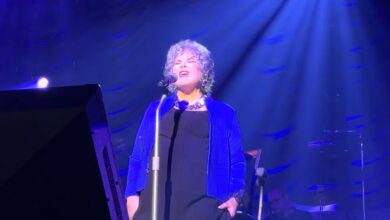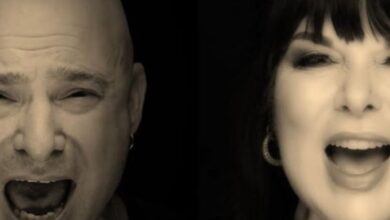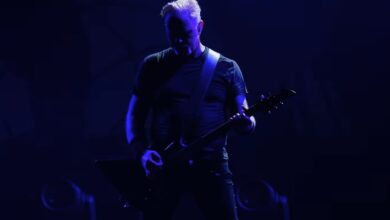Nancy and Ann Wilson Bring “These Dreams” to Life in 2025
Heart’s return to Edmonton on March 21, 2025, felt like a reunion with old friends who’ve weathered storms and still shine. At Rogers Place, the Wilson sisters leaned into a catalog that’s grown up alongside their audience, and “These Dreams” became the night’s quiet thunder—less about spectacle, more about survival, memory, and the stubborn endurance of a melody you’ve carried for decades. The show was part of the Royal Flush Tour, a resumption after a difficult pause, and the venue buzzed with gratitude before the first note.
The setting mattered. Rogers Place—newer than the arenas where Heart first learned to conquer rooms—gave their classic power ballad the space to bloom. The mix was intimate even in a big house: soft-lit stage, crowd murmurs receding, guitar harmonics like a flashlight in fog. Edmonton had waited, and the band answered with poise rather than pyrotechnics, a tone that matched the song’s dream-logic imagery and the moment’s reflective mood.
This stop sat squarely in a tightly routed Canadian run: Calgary the night before, Winnipeg a few days later. The itinerary underlined how much ground the group was determined to cover after postponements—no half-steps, no cautious toe-dips. In that context, “These Dreams” landed as a thesis statement: a band asserting that the body can be tired, the road long, and yet the soul remains stubbornly strong.
Crucially, Edmonton didn’t just hear a favorite; it witnessed the song in its natural habitat—with Nancy Wilson on lead, the way the world first met it in 1986. The timbre that once cut through FM radios at No. 1 on the Billboard Hot 100 returned with lived-in warmth, and you could feel the room lean in on the opening lines, recognizing the texture before the lyric.
Part of the magic was historical gravity. “These Dreams” was written by Bernie Taupin and Martin Page, pairing Elton John’s lyricist with a pop craftsman to give Heart a storybook reverie that turned into a career milestone. Hearing it decades later, sung by the voice that made it famous, the narrative felt newly autobiographical—less fairy tale, more field report from the far side of a long road.
The night’s lineup helped the song breathe. With Nancy covering acoustic and electric textures and Ann carrying harmonies and dynamics elsewhere in the set, the expanded touring band—guitars, keys, rhythm section—stayed out of the lyric’s way and let the melody do the heavy lifting. Arrangements were polished but not lacquered, the kind of restraint that comes only from players who trust the material.
Video clips from inside the arena show the moment as fans lived it: phones up, a hum of recognition, then quiet. Nancy’s phrasing bent around the words with that slightly smoky contour people remember from the record, while the band colored inside the lines—just enough sparkle to frame the vocal without crowding it. The applause crest at the end says as much as any review could.
Setlist watchers clocked “These Dreams” mid-set on this tour, a pacing choice that kept momentum while giving both singer and audience a place to exhale. Surrounding it with ‘70s rockers and later-era favorites underscored Heart’s stylistic range—proof that a whisper can carry as far as a roar when delivered by the right voice in the right room on the right night.
That right voice, of course, belongs to Nancy here, while the band still benefits from Ann’s presence elsewhere—a dual-engine dynamic that has defined Heart for half a century. On this tour leg, that partnership read like a promise kept: whatever miles separate chapters of their story, they meet again onstage with songs that outlast years, trends, and algorithms.
Context deepened the emotion. The Royal Flush dates were rescheduled after Ann Wilson’s cancer diagnosis and treatment in 2024, and the return to work in 2025 carried a charge you could feel from the concourse to the floor. When a band walks back onstage after a scare, even the most familiar ballad becomes testimony: we’re still here; the music still matters.
For many in the room, memory flashed to 2012’s Kennedy Center Honors, when the Wilsons sang “Stairway to Heaven” in front of Led Zeppelin and brought a hall of legends to its feet. That reputation—interpreters who honor source material without imitation—shadows their catalog, and “These Dreams” benefits from the same sense of reverence for songcraft over showboating.
The crowd’s demographic told its own story: longtime fans who remember cassette spools and Top 40 countdowns, alongside younger listeners discovering Heart through parents, playlists, or that viral Kennedy Center clip. In Edmonton, you could watch those eras shake hands—people mouthing lines learned in the ‘80s standing next to teenagers filming a new favorite for the ride home.
What separates a routine run-through from a night people keep talking about is tension—between fragility and power, polish and risk. “These Dreams” walked that tightrope. The lyric’s surreal imagery stayed airy, but the performance had weight. It was less nostalgia than proof: a song can grow with its singers, picking up grain and gravitas without losing its shimmer.
And yes, age was part of the alchemy. With Nancy at 71 and Ann at 74 this year, the line between character and narrator blurs; themes of longing, distance, and hard-won grace hit differently when delivered by artists who have lived the miles. The takeaway for the younger crowd wasn’t subtle: be true to your heart, and be kind to your elders—one day, you’ll sing from this ridge, too.
By the time Edmonton filed out, “These Dreams” had done what great live songs do: it stitched past to present and sent people home quieter than they arrived. The body may be tired, but the soul remains strong; in that arena, for those minutes, the refrain felt less like a chorus than a benediction—proof that some melodies become companions, and some nights remind you why.





